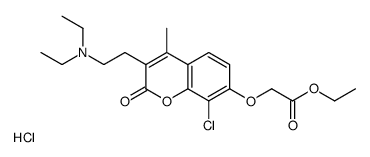Protective effects of a coumarin derivative in diabetic rats.
Claudio Bucolo, Keith W Ward, Emanuela Mazzon, Salvatore Cuzzocrea, Filippo Drago
Index: Invest. Ophthalmol. Vis. Sci. 50(8) , 3846-52, (2009)
Full Text: HTML
Abstract
Retinal microvascular cells play a crucial role in the pathogenesis of diabetic retinopathy. The endothelial effects of cloricromene, a novel coumarin derivative, on diabetic retinopathy induced by streptozotocin (STZ) in the rat were investigated.Cloricromene (10 mg/kg intraperitoneally) was administered daily in diabetic rats, and 60 days later eyes were enucleated for localization of nitrotyrosine, ICAM-1, VEGF, ZO-1, occludin, claudin-5, and VE-cadherin by immunohistochemical analysis. The effect of treatment was also evaluated by TNFalpha, ICAM-1, VEGF, and eNOS protein levels measurement in the retina with the respective ELISA kits. Blood-retinal barrier (BRB) integrity was also evaluated by Evans blue.Increased amounts of cytokines, adhesion molecule, and nitric oxide synthase were observed in retina. Cloricromene treatment significantly lowered retinal TNFalpha, ICAM-1, VEGF, and eNOS. Furthermore, immunohistochemical analysis for VEGF, ICAM-1, nitrotyrosine (a marker of peroxynitrite), and tight junctions revealed positive staining in the retina from STZ-treated rats. The degree of staining for VEGF, ICAM-1, nitrotyrosine, and tight junctions was markedly reduced in tissue sections obtained from diabetic rats treated with cloricromene. Treatment with cloricromene suppressed diabetes-related BRB breakdown by 45%.This study provides the first evidence that the new coumarin derivative cloricromene attenuates the degree of inflammation preserving the BRB in diabetic rats.
Related Compounds
| Structure | Name/CAS No. | Molecular Formula | Articles |
|---|---|---|---|
 |
Cloricromenehydrochloride
CAS:74697-28-2 |
C20H27Cl2NO5 |
|
Cloricromene in endotoxemia: role of NF-kappaB.
2004-08-01 [Naunyn Schmiedebergs Arch. Pharmacol. 370(2) , 140-5, (2004)] |
|
Tumor necrosis factor induces E-selectin production in splan...
1995-04-01 [Am. J. Physiol. 268(4 Pt 2) , H1412-7, (1995)] |
|
Preparation and characterization of eudragit retard nanosusp...
2006-01-01 [AAPS PharmSciTech 7(1) , E27, (2006)] |
|
Enhancement of availability of cloricromene at brain level b...
2006-07-01 [J. Pharm. Pharmacol. 58(7) , 1001-5, (2006)] |
|
Cloricromene, a coumarine derivative, reduced the developmen...
2006-04-01 [Naunyn Schmiedebergs Arch. Pharmacol. 373(1) , 51-9, (2006)] |